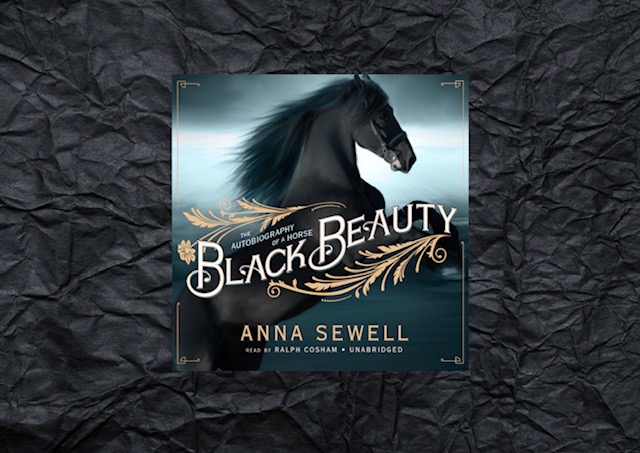The Classics Club: Black Beauty
Full Title: Black Beauty: His Grooms and Companions, the Autobiography of a Horse
Author: Anna Sewell (1820-1978)
Date Published: 1877 in the U.K
Mode of Reading: Audiobook by Blackstone Publishing, 5 hrs 21 min
About the Author
Born to a devout Quaker family in Norfolk, England, Anna severely injured her ankles as a child, leading her to decreased mobility on crutches and she heavily relied on horse-drawn carriages to get around for her whole life. Because of this as well as her love for horses, she was a lifelong supporter of respectful horse management. She was inspired to write about animal welfare after reading "An Essay on Animals". Black Beauty, her only novel, was published in 1877 a mere five months prior to her death at the age of fifty-eight. It was written during her last six years of life, during her declining health. Much of the manuscript was dictated by Anna to her mother, who was an established author, while Anna was confined at home as an invalid.Plot and Thoughts
Partly a social commentary on the care of horses and partly an autobiography with vignettes of a workaday horse from his own perspective, Black Beauty is told straight from the horse's mouth (I couldn't resist).With over fifty million copies sold in fifty languages, it is one of the most popular classics. Black Beauty is a horse who is admired for his appearance and strength in his young age, hence his name. He has several horse friends (a formerly ill-treated female horse named Ginger who would get angry and kick at people and a fearful war horse named Captain who used to be brave until his beloved owner was killed during battle while riding on him). Several of Black Beauty's owners were very kind to him. But this is not your typical children's animal-themed story where the bond between an animal and a specific child is followed throughout the book. He appreciates the kind masters but doesn't get overly attached to any human.Black Beauty isn't a racing horse, war horse, or a horse that goes on a grand adventure. Instead, he is a working horse that is owned by a variety of owners, some nice and some negligent. The story doesn't have a clear climax or exciting gallop of suspense or drama. Instead, it trots at a slow pace with interesting, yet not intriguing, thoughts of a horse's life and how he is treated. There are long passages about how to care for horses, such as breaking them in. And there are passages about some of the painful things done to horses in the name of Victorian-era fashion, namely tightening the bearing rein to force a horse's head up to appear more stately and proud (but it caused neck pain to the horse and increased the chance of accidents since he couldn't see what was directly beneath him) and cutting off the tail to be a short nub (which caused immense irritation when gnats and flies swung about their rears and the horse was powerless to swat them away with their tail). Anna Sewell didn’t intend for this classic to be categorized as a children’s tale, but rather, more as a guide to horse husbandry, including management of stables and instituting humane training practices. She said, “A special aim was to induce kindness, sympathy, and an understanding treatment of horses".
Influence of Black Beauty on Society
Black Beauty is the first English novel written from the perspective of an animal. Many followed in the next century, such as Watership Down, Animal Farm, The Call of the Wild, Charlotte’s Web, and more recently, The One and Only Ivan. Children and adults alike have enjoyed this creative writing device. Its influence on literature is not the only way Black Beauty marked history. Written one-hundred forty-three years ago, there weren't modern modes of transportation like cars and trucks, so most people depended on horses for a variety of reasons, including to act as cabs for transporting townspeople around in carriages and pulling work carts in fields or delivering merchandise (Black Beauty worked both as a cab horse as well as delivering meat from a butcher shop, among other jobs throughout his life). This book brought up a lot of awareness regarding maltreatment of horses that resulted in many people changing how they cared for their own horses. For example, usage of the bearing rein to force the horse’s head in an unnaturally raised position went out of vogue shortly after this book was published. Anti-cruelty legislation was sparked by this book, not only in England but across the pond in America as well.
(Sources: Wikipedia and Overdue Podcast)
My Rating
★★★★☆
Content Rating
G (no language, sexual content, nor violence)
Classics Club Stats
This is #9 of 75 books in The Classics Club challenge. See my book list HERE
Classics Club Stats
This is #9 of 75 books in The Classics Club challenge. See my book list HERE

Comments
Post a Comment
I love to hear your thoughts!
Elle Alice